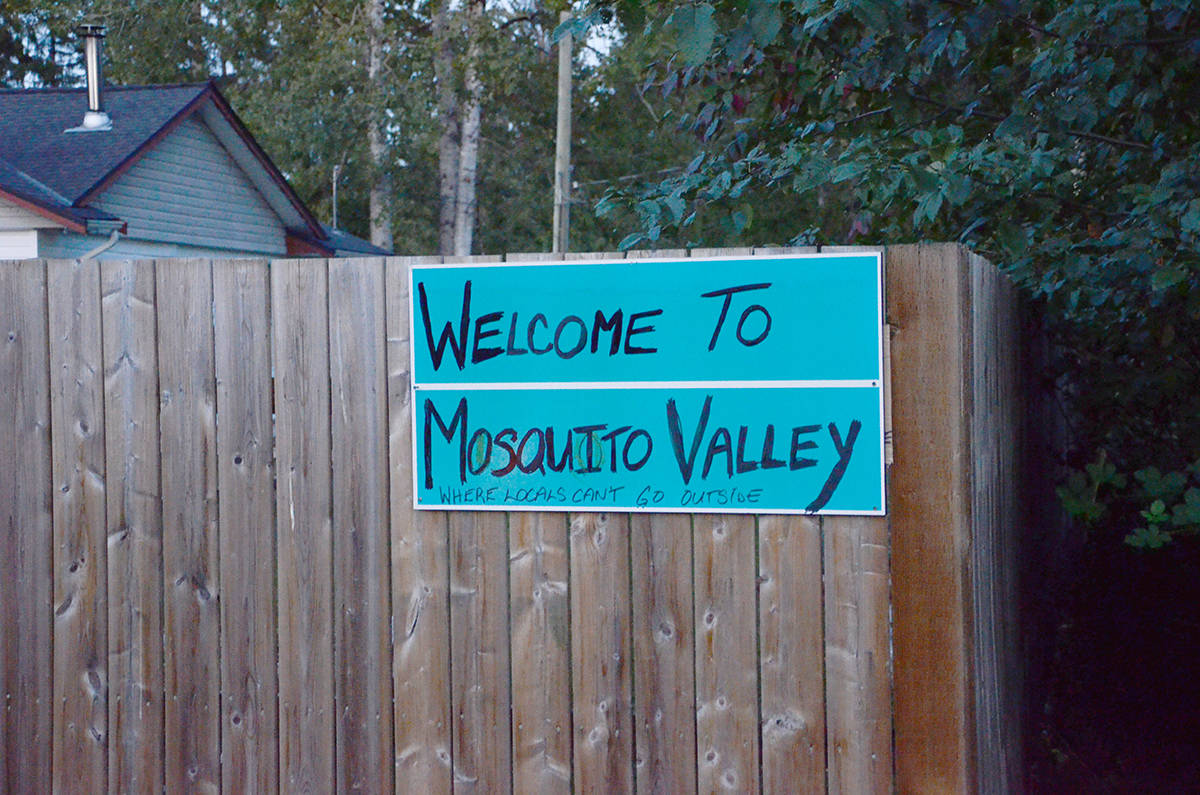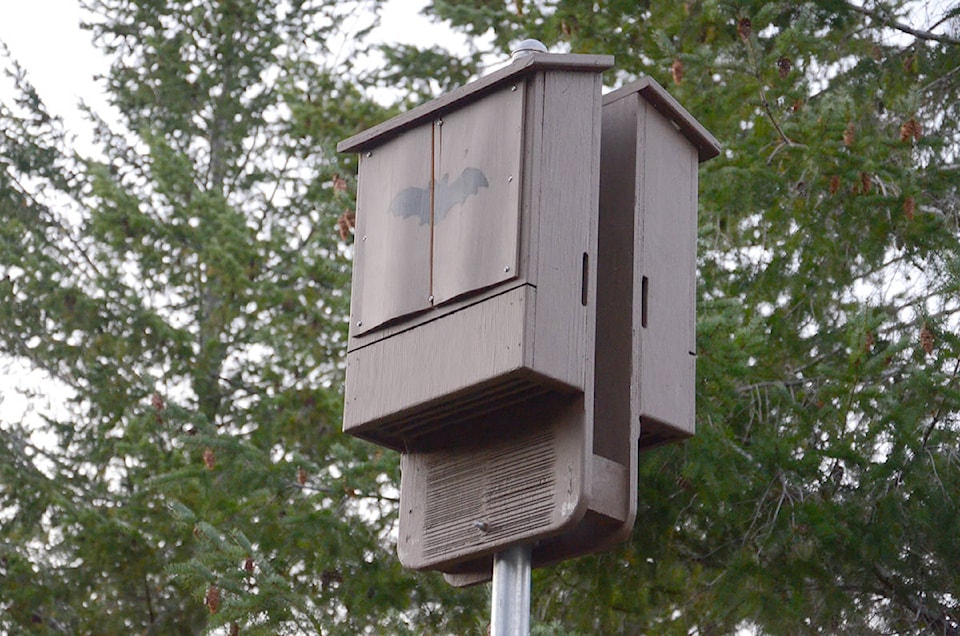If bats are being used in the battle against mosquitoes in the Saratoga and Miracle Beach area, they might need an ally or two to protect their own habitat.
Tim Ennis, the coordinator of the new North Island chapter of the B.C. Community Bat program on Vancouver Island, says a big challenge in attracting bats to areas where humans are dealing with mosquitoes is that their habitats are disappearing.
He noticed this while checking the Saratoga and Miracle Beach area for populations that could potentially help control problem mosquitoes in the area. The problem has been getting worse and was especially bad this past summer.
RELATED STORY: Saratoga, Miracle Beach residents itching to get to core of mosquito issue
RELATED STORY: Human case of West Nile virus reported on Vancouver Island
Ennis uses a special ultrasonic microphone to pick out bat calls that humans cannot hear. This helps him to determine what types of bats live in an area.
“I also get a sense of how many are there,” he says.
He can attach this to his vehicle and drive around slowly to form a picture of where bat colonies are. He noticed populations at different ends of the region, but in the middle was a gap, which is where many mosquitoes tend to be.
“I drove the entire Saratoga-Miracle Beach neighbourhood looking for bats,” he says.
He was shocked to see so few in some trouble spots. The Oyster River estuary has lots of bats, as does the park at Miracle Beach.
“Everything in between has not got very many,” he says.
These happen to be locations where homes have been built but which once had old trees. These, in turn, provided homes to bats. This is not simply a problem for one section of the region but more of an issue throughout the Island.
“Other sites that they would normally use for habitat are not there anymore,” he says.
A solution for now is bat boxes, Ennis says. They are actually quite an old approach to the problem. The idea was proposed by a physician and bacteriologist named Charles A. Campbell in an attempt to control malaria a century ago. According to Bat Conservation International, he built large, multi-storey bat homes in the area of San Antonio, Tex., which after a few failed prototypes, ultimately helped eliminate malaria as a threat by reducing mosquito populations.
“It’s reasonable that something similar could work in Miracle Beach … Saratoga Beach,” Ennis says.
He has checked out Driftwood Marine Park, which has boxes, and thinks they can provide some habitat for bats.
While bat boxes can provide a good artificial habitat for the mammals, it’s not simply a matter of going to the hardware store and putting up some lumber.
“You might want to talk to a bat biologist before you just slap them together,” he says.
There are a lot of considerations, including the type of species in an area. Factors like temperature and humidity have to be considered if one hopes to attract bats. The time of the year is also crucial. Many of the bats in the area are getting ready to hibernate or head south. If it’s not a great time to build a bat box then, it is a great time, Ennis says, to start planning for next spring.
To help communities deal with issues such as mosquitoes as well as protect bat habitat, the North Island chapter of the B.C. Community Bat program started up in April. They have some seed money, but it really only covers basic expenses. Ennis estimates it probably does not even cover his travel to sites in the region, so he would like to find other funding sources to help with a program.
“Our bat program here is really new,” he says. “We’re trying to get the word out.”
Bat pose little risk
While there have been a couple of recent cases in which a bat on the Island was found to have rabies, Ennis says there is very little risk posed by the animals. One caution is for owners of pets, especially cats, which might come into contact with bats, to have their pets vaccinated updated. The bats that tend to be caught are also ones more likely to be sick. Still, the incidence of rabies in wild bat populations in B.C. is rare – at less than one per cent. As well, human-bat interaction is uncommon. As Ennis says, the tragic case of a human rabies mortality on the Island this year could be what has increased public interest.
“As horrible as that situation was, it does perhaps provide us with an opportunity as a community to reflect on best practices around bats to keep us safe, to think about the critical role bats play in our ecosystems and to acknowledge the significant threats to bat populations that are emerging,” he says.
Ennis also recommends not assuming a bat flying around or crawling during daylight has rabies, even if it seems to be acting strangely. Sometimes, animals have been disturbed from sleep during the day.
However, he does caution people against touching bats with their bare hands. If they must pick up an animal, they should use gloves or a towel. If they do have direct skin contact, regardless of whether they are bitten, they need to seek medical attention promptly – specifically, by getting a series of three vaccine shots.
Bats ultimately help humans to control unwanted insect populations, and of current concern to Ennis is a spread of a fungus killing bat species called white nose syndrome (WNS). It is not yet known to occur in B.C. but has been detected in Washington.
“If anyone encounters a dead bat (or many dead bats) between Nov. 1 and May 31, we want to collect those specimens to test them,” he says.
Ennis can be contacted at the North Island Bat Project at northisland@bcbats.ca.
mike.chouinard@comoxvalleyrecord.com
Like us on Facebook and follow us on Twitter.

